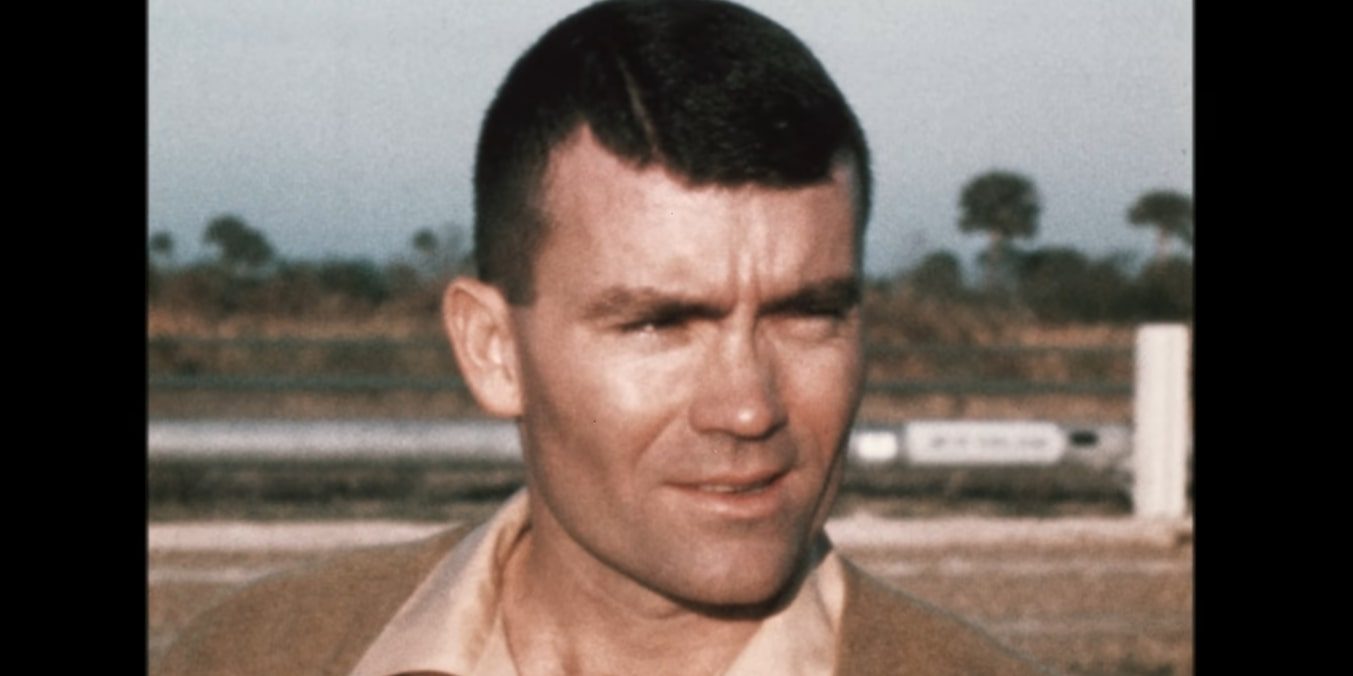Fred Haise was a NASA astronaut and the Lunar Module Pilot on the ill-fated Apollo 13 mission in 1970. Alongside Commander Jim Lovell and Command Module Pilot John L. “Jack” Swigert Jr., Haise helped the team manage the spacecraft’s limited resources, conserve power, and use the Lunar Module as a “lifeboat” to return to Earth safely. He even developed a high temperature, a urinary tract infection, and several other complications but was determined to save the lives of his co-pilots. Netflix’s ‘Apollo 13: Survival’ features the historical journey the three took and how their lives changed in its aftermath.
Fred Haise Continued Working With NASA Years After Apollo 13
Fred Wallace Haise Jr. had previously served in the U.S. Marine Corps and U.S. Air Force, but his role as a NASA astronaut on the Apollo 13 mission cemented his legacy. After safely landing in the Pacific Ocean on April 17, 1970, following the harrowing mission, Haise and his crewmates embarked on a “quarter-world tour,” attending public events and fulfilling official duties in countries such as Iceland, Ireland, Germany, Switzerland, and even becoming the first official group to visit Greece. However, rest was short-lived for Haise, as within just a few weeks of returning, he was called back to NASA and appointed the backup commander for Apollo 16.

Fred Haise stated that he had to put his public appearances behind him and focus on crew training after Apollo 13. Following his successful stint as the backup commander for Apollo 16, Haise transitioned to the Space Shuttle program, where he played a pivotal role. In 1977, he was part of the Approach and Landing Tests (ALT) conducted at Edwards Air Force Base, designed to demonstrate the shuttle’s ability to glide and land after re-entering Earth’s atmosphere. These tests were crucial for validating the Space Shuttle’s reusability concept. From February to October 1977, the space shuttle test program was conducted and was very valuable in understanding the capabilities of the orbiter. Haise was the only one of the four astronauts in the program who did not go to space in its duration.
Fred Haise Joined an Aerospace Corporation to Keep Challenging Himself
In 1979, Fred Haise decided to retire from NASA, recognizing that his skills would be better utilized elsewhere with funding cuts and shifting governmental priorities away from space exploration. He joined Grumman Aerospace Corporation, a company well-known for its role in designing and manufacturing military and aerospace systems. Grumman was responsible for designing and constructing the Lunar Module, the spacecraft that Haise had become intimately familiar with during the Apollo 13 mission, which played a crucial role in the crew’s survival. At Grumman, Haise worked as both a test pilot and an executive, continuing to apply his expertise in aerospace development and engineering.

Fred Haise received numerous accolades and awards for his distinguished service in various capacities. In 1970, he was awarded the Presidential Medal of Freedom, the highest civilian honor in the United States, for his role in the Apollo 13 mission. This was followed by the NASA Distinguished Service Medal and the Johnson Space Center Special Achievement Award. Several states, including Houston, New York, and his home state of Mississippi, honored him with various awards. In 1983, Haise was inducted into the International Space Hall of Fame, and in 1997, he was further recognized with induction into the U.S. Astronaut Hall of Fame.
Fred’s Program for Science Education is Making a Change Even Today
After Fred Haise retired from Grumman in 1996, it marked the beginning of a new chapter in his life. He moved to Texas but frequently traveled between there and his home state of Mississippi. Driven by his passion for science and belief that it could provide a rewarding career path for others, Haise sought to enhance science education in his hometown. This vision led to the creation of the INFINITY Science Center, a public science education facility in Pearlington, Mississippi.
The center opened in 2012 and serves as an interactive learning hub focusing on space exploration, Earth science, and engineering. It offers educational programs, exhibits, and partnerships with NASA’s nearby Stennis Space Center, inspiring the next generation of scientists and engineers. Haise has been serving as a board of directors member and often donates his earnings from public engagements to the program. His passion for what he started has not died, which has kept him satisfied till now.
Fred Haise’s Family Values and Loves Him Deeply
Now primarily living in Houston, Texas, Fred Haise reflects on his life with a sense of fulfillment and few complaints. In an interview in 2020, he said, “I’ve had a very good career. It’s been rewarding to me and I think I’ve done some things that helped. So I wish everybody could end up in a similar vein.” On February 7, 2022, his wife, Patt Haise, passed away, and in a circle-of-life moment, his book ‘Never Panic Early: An Apollo 13 Astronaut’s Journey’ was released just a few weeks later in April 2022.
Since then, the 90-year-old and his four children — Mary Margaret Maitland, Thomas Haise, Stephen Haise, and Frederick Haise — have kept close to each other. Even his granddaughter, Kota Woodall, visits him often and brings with her all the joy that he wants to hold. His passion for his community, his family, and all those he holds dear makes him a man who deserves to be celebrated each day.
Read More: Jim Lovell: Where is the Apollo 13 Commander Now?


You must be logged in to post a comment.